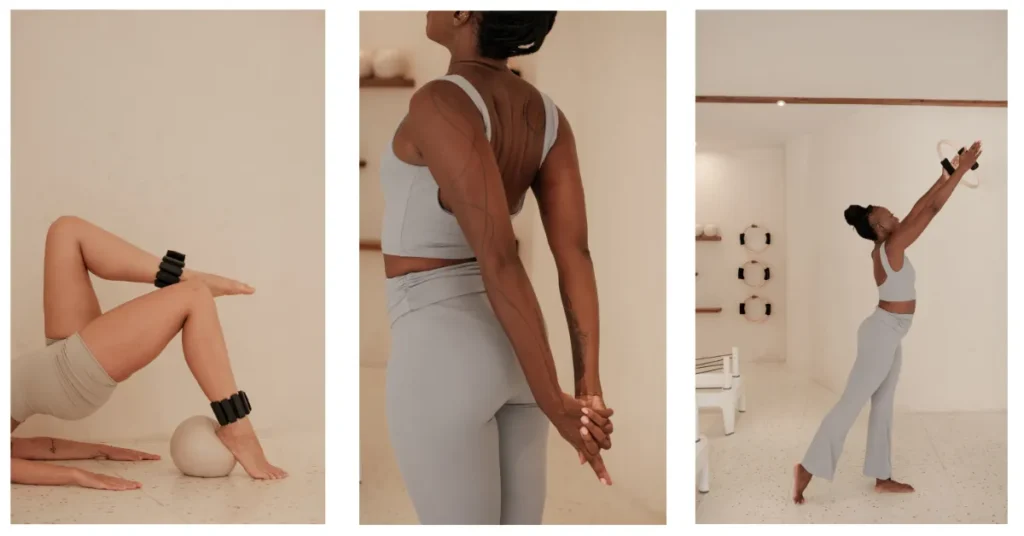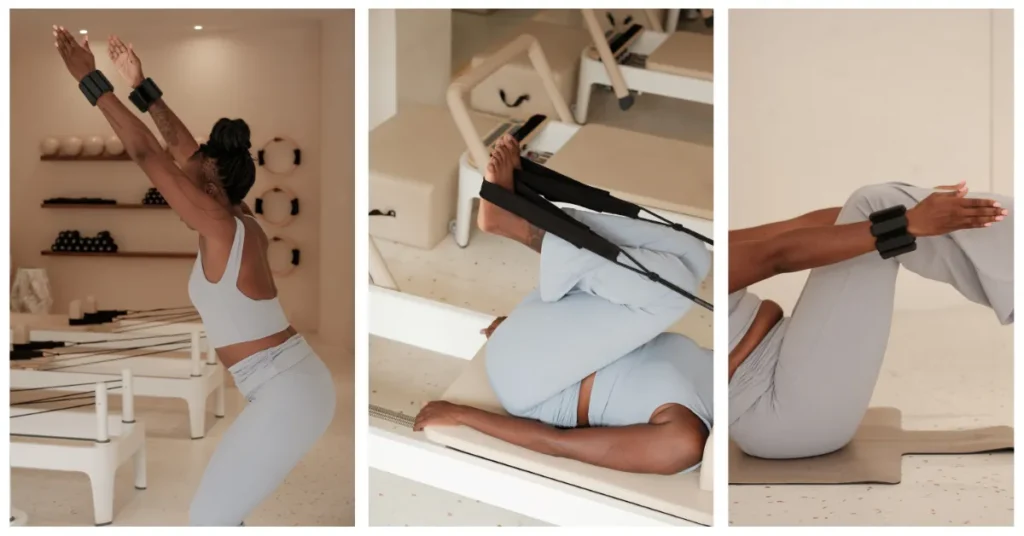Mindful Space Yoga: Mindful Yoga
In our fast-paced, digital world, finding moments of peace and inner connection has become more crucial than ever. Enter mindful space yoga – a practice that combines the ancient wisdom of yoga with mindfulness principles to create a sanctuary for both body and mind. This transformative approach goes beyond physical postures to cultivate deep awareness, presence, and a profound connection with ourselves.
Understanding Mindful Space Yoga
Mindful space yoga is more than just a physical practice; it’s a holistic approach that integrates traditional Buddhist mindfulness teachings with yoga asanas (poses). Unlike conventional yoga classes that might focus primarily on alignment and physical achievement, mindful space yoga emphasizes mind-body awareness and present-moment consciousness.
The practice applies the Buddha’s Four Foundations of Mindfulness to systematically cultivate self-awareness and compassion through non-judgment, patience, beginner’s mind, trust, non-striving, letting go, and gratitude. This creates what practitioners often describe as a “moving meditation” – where every breath, movement, and moment becomes an opportunity for deeper awareness.

The Science Behind Mindful Yoga
Research from institutions like Harvard Medical School and Massachusetts General Hospital’s Depression Clinical and Research Program has validated the profound benefits of combining mindfulness with yoga practice. Studies show that mindful yoga can lead to:
- Reduced stress and anxiety through enhanced relaxation response
- Improved emotional regulation and greater emotional resilience
- Enhanced focus and cognitive function through present-moment awareness
- Better sleep quality from nervous system regulation
- Decreased chronic pain through mindful body awareness
- Greater self-compassion and acceptance of oneself and others
- Increased body awareness and connection to physical sensations
7 Proven Benefits of Mindful Yoga
Combining mindfulness with yoga offers multiple physical, emotional, and psychological benefits (La Torre et al., 2020). Here are some of the most common advantages your clients can expect if they practice mindful yoga:
1. Reduced stress and anxiety
Mindful movement activates the parasympathetic nervous system, lowering cortisol levels and reducing stress (Gothe et al., 2016).
2. Enhanced emotional regulation
The practice will help your clients foster greater self-awareness, helping them to respond rather than react to emotional triggers (Herwig et al., 2010).
3. Improved focus and cognitive function
Mindful yoga enhances brain function, helping to improve your clients’ concentration and memory (Jha et al., 2019).
4. Better sleep quality
Mindfulness-based yoga practices improve sleep patterns and reduce insomnia (Sharpe et al., 2021).
5. Decreased chronic pain
Yoga-based mindfulness can help clients with chronic pain conditions by increasing body awareness and promoting relaxation (Büssing et al., 2009).
6. Greater self-compassion and acceptance
Practicing mindful yoga will encourage your clients to cultivate an attitude of kindness toward themselves, reducing self-criticism and enhancing self-esteem (Snaith et al., 2018).
7. Increased body awareness and connection
It also helps clients attune to their bodily sensations, fostering a healthy relationship with their bodies (Cox et al., 2020).
Creating Your Mindful Yoga Space
The physical environment where you practice plays a crucial role in supporting your mindful yoga journey. Creating a dedicated space – whether it’s an entire room or just a corner of your living area – helps establish the mindset and atmosphere conducive to deeper practice.
Essential Elements for Your Space
1. Minimalism and Clarity Start with a clean, uncluttered space that allows for free movement. A typical home practice requires approximately 4.5′ x 4.5′ of space (about 21 square feet), though any extra room provides flexibility for additional movements and stretches.
2. Natural Elements Incorporate plants to purify the air and cultivate a sense of peace. Studies show that connecting with nature, even indoors, enhances the mindfulness experience and promotes mental clarity.
3. Appropriate Lighting Soft, natural light is ideal for practice. If practicing in the evening, consider warm, dim lighting that helps activate the parasympathetic nervous system and prepare the body for relaxation.
4. Comfortable Foundation A quality yoga mat provides the basic foundation for your practice. Choose one that offers adequate cushioning and grip for both standing and floor poses.
5. Sensory Support Consider adding elements that engage your senses mindfully:
- Essential oil diffuser or candles for aromatherapy
- Soft background music or nature sounds
- Comfortable cushions or bolsters for seated meditation
- A blanket for final relaxation (savasana)
Core Principles of Mindful Space Yoga Practice

The Four Foundations of Mindfulness in Yoga
1. Mindfulness of Body This involves awareness of the body as a collection of parts rather than identifying with it as “my body.” During practice, systematically observe different body regions, noticing sensations without judgment. This foundation helps practitioners understand the impermanent nature of physical experiences.
2. Mindfulness of Feelings This encompasses both bodily sensations and emotions that arise during practice. Whether pleasant, unpleasant, or neutral, observe these feelings without attachment or identification. Notice how sensations change throughout your practice.
3. Mindfulness of Mind Focus on consciousness or awareness itself rather than getting caught up in thinking. Observe how thoughts arise and pass away, learning not to attach your identity to mental activity. This helps develop equanimity and mental clarity.
4. Mindfulness of Dharma Develop awareness of the interconnected nature of all things and the temporary quality of all experiences. This foundation cultivates wisdom and perspective about the nature of reality.
Practical Techniques for Mindful Practice
Body Scanning Regularly scan your body during poses, noticing subtle shifts in sensation, energy, and awareness. Pay attention to areas of tension, ease, or neutrality without trying to change anything immediately.
Breath Awareness Use your breath as an anchor to the present moment. Notice the quality of your breathing – is it shallow or deep, fast or slow? Allow your breath to guide the pace and intensity of your practice.
Present-Moment Questioning Throughout your practice, gently ask yourself:
- How is my breath right now?
- Where am I feeling sensation in my body?
- Am I staying present, or is my mind wandering?
- Am I comparing myself to others or to past performances?

Essential Mindful Yoga Poses
1. Tadasana (Mountain Pose)
This foundational standing pose appears simple but offers profound opportunities for mindfulness. Stand with feet hip-width apart, grounding through all four corners of your feet. Notice the subtle adjustments your body makes to maintain balance. Use this pose to cultivate stability and presence.
2. Vrikshasana (Tree Pose)
This balancing pose requires complete present-moment awareness. As you shift weight to one foot and place the other on your inner thigh, notice how your mind responds to the challenge of balance. Observe any judgments or frustrations that arise when you lose your balance.
3. Anjaneyasana (Low Lunge)
This pose often evokes intense sensations in the hip flexors and thighs. Practice observing these sensations with curiosity rather than resistance. Notice any desire for the pose to end, and practice staying present with whatever arises.
4. Supta Baddha Konasana (Reclining Bound Angle Pose)
This restorative pose serves as an excellent transition into meditation. Allow your knees to fall open naturally while observing any discomfort in the inner thighs without trying to force deeper opening. This pose teaches acceptance and surrender.
Integrating Mindfulness Off the Mat
The true power of mindful space yoga lies in its ability to transform daily life. Regular practice develops:
Enhanced Emotional Regulation The patience and non-reactivity cultivated on the mat naturally extends to challenging situations in daily life. You’ll find yourself pausing before reacting, creating space for more thoughtful responses.
Deeper Self-Compassion The kind, non-judgmental awareness practiced during yoga translates into greater self-acceptance and compassion in everyday situations. This can be particularly beneficial for those dealing with depression, anxiety, or self-criticism.
Improved Stress Management The relaxation response activated during mindful yoga practice creates lasting changes in how your nervous system responds to stress. Regular practitioners often report feeling more calm and centered throughout their day.
Greater Body Awareness Increased sensitivity to bodily sensations helps you recognize early signs of stress, fatigue, or emotional upset, allowing for proactive self-care.
Building a Sustainable Practice
Starting Your Journey
Begin with short, consistent sessions rather than attempting lengthy practices that might feel overwhelming. Even 10-15 minutes of mindful movement can be profoundly beneficial when practiced regularly.
Working with Resistance
It’s natural to encounter resistance – both physical and mental – during practice. Rather than pushing through or avoiding difficult sensations, use them as opportunities to practice mindfulness. Notice your reaction to discomfort and experiment with breathing through challenging moments.
Adapting to Your Needs
Remember that mindful yoga is about listening to your body and honoring its needs in each moment. Some days you might need gentle, restorative movements, while other days might call for more dynamic practice. Trust your inner wisdom to guide you.
Seeking Guidance
Consider working with qualified teachers who understand both yoga and mindfulness principles. The Mindfulness-Based Stress Reduction (MBSR) program, developed by Jon Kabat-Zinn, often incorporates mindful yoga and can provide structured guidance for beginners.
The Ripple Effect of Practice
As you establish a regular mindful space yoga practice, you’ll likely notice its effects extending far beyond your designated practice time. Many practitioners report:
- Improved relationships through greater patience and compassion
- Enhanced creativity and problem-solving abilities
- Better sleep and overall physical health
- Increased resilience during challenging times
- A deeper sense of purpose and connection to life
Reclaim your focus, vitality, and purpose.
Imagine starting every day with a quiet meditation and yoga session that helps you stay focused on what’s important to you. Imagine feeling energized and refreshed, ready to take on the day. Imagine feeling more connected to yourself, your community, and your purpose.
Our weekend retreats are designed to help you do just that. We offer a variety of activities and workshops to help you relax, rejuvenate, and reconnect with your inner self.
Here’s what you can expect:
- Guided Meditation – Learn how to meditate effectively and experience the benefits of a regular meditation practice.
- Yoga Classes – Improve your flexibility, strength, and balance.
- Workshops – Learn about the deeper aspects of meditation, yoga, philosophy, and practice.
- Healthy Meals – Enjoy delicious, nutritious meals that will nourish your body and mind.
- Time to Relax and Reflect – Spend time in nature, connect with other like-minded people, and reflect on your goals and priorities.
who are the instructors?
The instructors are Dada Rainjitananda, Dada Nabhaniilananda, and Dada Viveka. Each one is a senior A’carya, or spiritual guide, as well as a seasoned Yoga instructor with a wealth of experience. A significant number of our instructors are Yogic monks who have devoted their entire lives to the study and instruction of time-honored meditation and Yoga practices. This provides you with the unique opportunity to learn an authentic and profound practice from some of the most accomplished individuals in the field.
Conclusion
Mindful space yoga offers a powerful pathway to greater awareness, acceptance, and well-being. By creating a dedicated practice space and approaching yoga with mindful attention, we transform simple physical movements into opportunities for profound personal growth and healing.
The beauty of this practice lies in its accessibility – you don’t need to be flexible, strong, or experienced to begin. All that’s required is a willingness to show up, pay attention, and meet yourself with kindness in each moment.
As you embark on or deepen your mindful space yoga journey, remember that the goal isn’t to achieve perfect poses or enlightened states. Instead, it’s about cultivating a compassionate, aware relationship with yourself that supports greater ease and fulfillment in all aspects of life.
Whether you practice for five minutes or an hour, in a dedicated studio or a corner of your bedroom, the invitation remains the same: to arrive fully in this moment, with this breath, in this body, and discover the profound peace and wisdom that already exists within you.
This article was compiled from research including insights from leading mindfulness and yoga experts. For additional resources and guided practices, consider exploring Mindfulness-Based Stress Reduction programs and certified mindful yoga instructors in your area.




